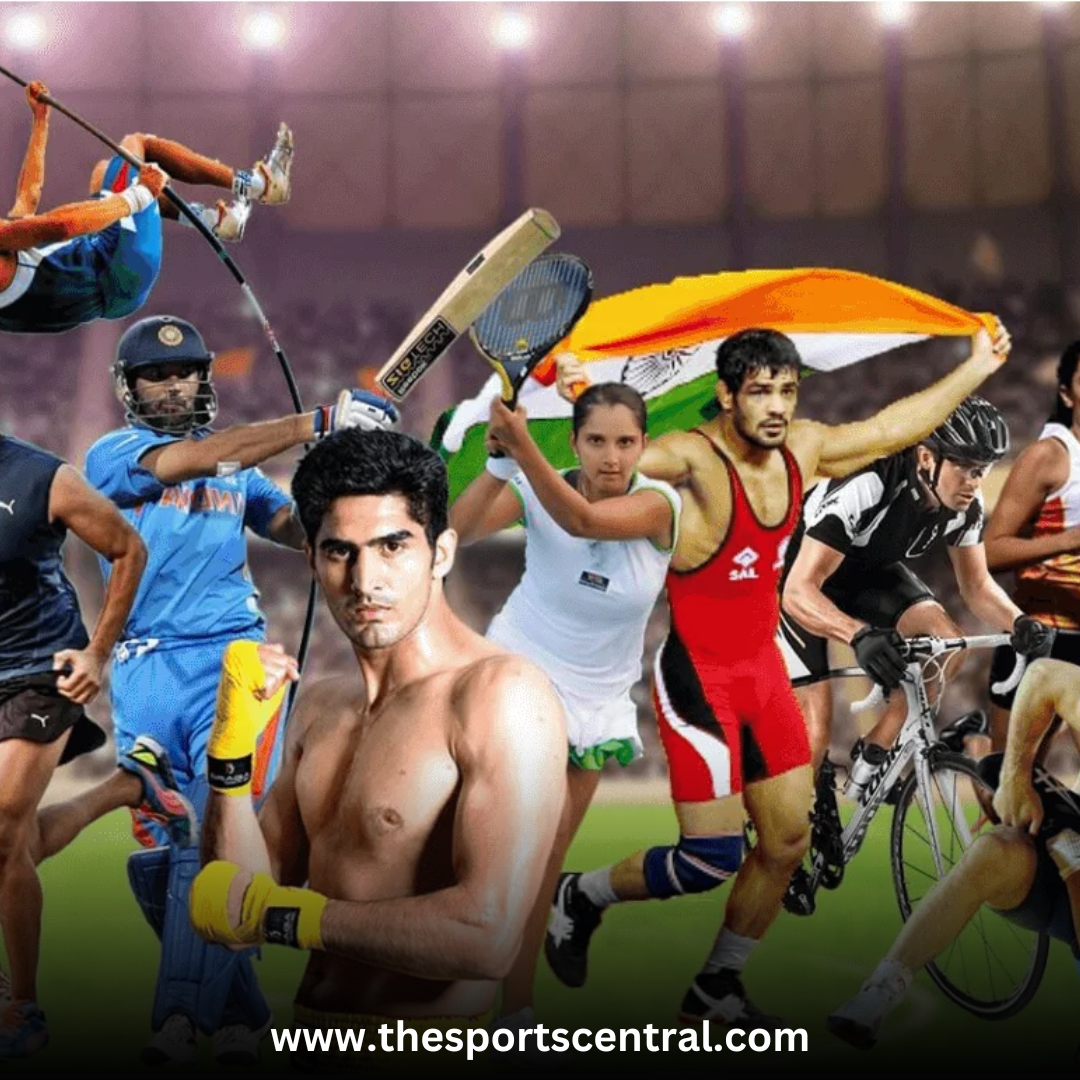India’s sports ecosystem stands on the brink of unprecedented growth, aiming to reach $130 billion by 2030. This projection, presented in the “Think Sports: Unlocking India’s $130B Sports Potential” report by Google and Deloitte, marks a transformative moment for the nation’s sports sector. Driven by a 14% compound annual growth rate (CAGR) — nearly twice the pace of India’s GDP — this shift signals a change in how Indians engage with and consume sports. This growth is powered by government investments, an emerging multi-sport culture, wide digital adoption, and an expanding array of quality sports content.
Rising Influence of Multi-Sport Culture
For decades, cricket has dominated India’s sports scene. However, a shift is underway. The growth of sports like football, badminton, kabaddi, and basketball demonstrates India’s evolving interest in diverse athletic pursuits. This multi-sport culture resonates particularly with Gen Z, who are more open to engaging with a variety of sports through digital platforms and social media. This evolution diversifies viewership and creates new opportunities for different sports leagues and brands to engage with Indian fans.
The growing multi-sport culture holds social significance as well. As more Indians engage with different sports, the potential for inclusivity, gender equality, and regional representation in sports rises. Female athletes and players from smaller towns are gaining more recognition and support. This inclusivity highlights India’s shift towards viewing sports as more than just entertainment; it’s becoming a medium for societal transformation.
Digital Adoption and Its Role in Sports Growth
India’s digital revolution has impacted almost every sector, and sports are no exception. With affordable internet access and smartphones reaching millions, digital platforms have expanded the reach of sports content. From live streaming games on mobile devices to participating in virtual leagues, Indian fans are now more engaged than ever. According to the report, this engagement is only set to grow, driven by advancements in AI-driven personalization, immersive technologies, and increasing digital accessibility.
Roma Datta Chobey, Interim Country Lead at Google India, emphasized this trend, noting the immense potential in enhancing the fan experience. AI and immersive technologies offer fans personalized content, tailored notifications, and interactive viewing options, making sports consumption more dynamic. The ability to track players, access real-time stats, and join virtual communities deepens fan engagement, creating a more loyal and invested audience.
These technological advancements benefit not only fans but also athletes and coaches. Real-time data analysis, performance tracking, and AI-driven insights help athletes and coaches strategize and improve performance. As technology integrates further into the sports sector, India is poised to become a leader in tech-driven sports engagement.
Economic Impact: Job Creation and Revenue Growth
The “Think Sports” report highlights the economic potential of India’s sports ecosystem. By 2030, India’s sports sector is expected to create up to 10.5 million jobs. These positions will span a range of fields, including event management, coaching, sports analytics, sports marketing, and facility management. As the sports industry grows, so will the demand for skilled professionals who can cater to the diverse needs of this expanding ecosystem.
Beyond job creation, the sports sector is projected to generate $21 billion in indirect tax revenue by 2030. This contribution is significant for India’s economy, indicating that sports are not just a cultural phenomenon but also an economic driver. The government stands to benefit from these revenues, which can be reinvested into infrastructure, grassroots programs, and talent development.
This economic growth also presents opportunities for private sector investment. Corporations, sports franchises, and tech companies see the potential of sports in India. By investing in leagues, sponsorships, and digital sports platforms, these businesses can tap into India’s expanding sports market, enhancing brand visibility and customer loyalty.
The Role of Government Investments in Infrastructure
India’s sports growth is deeply tied to government investments in infrastructure. Developing world-class stadiums, training centers, and sports complexes is essential for fostering talent and hosting international events. The government has recognized this need and is investing heavily in building the necessary infrastructure to support athletes and sporting events across the country.
Grassroots development is a core focus of this investment. For India to excel in sports, talent must be identified and nurtured from an early age. Building facilities in rural and semi-urban areas ensures that young athletes from diverse backgrounds have access to training and resources. This move democratizes sports, enabling individuals from all regions and economic backgrounds to pursue athletic careers.
However, infrastructure development alone is not enough. Strong public-private partnerships are crucial to ensure sustained growth. Collaborations between the government, corporates, and sports organizations can provide the resources, expertise, and funding necessary to build a robust sports infrastructure that benefits everyone.
Social Impact: Empowering Youth and Communities
Sports in India have a significant role in youth development and community empowerment. The “Think Sports” report emphasizes that sports can become a unifying force, fostering resilience, inclusivity, and ambition. By promoting sports at the grassroots level, India can engage its youth in positive activities that instill discipline, teamwork, and leadership skills.
Sports offer a pathway to improved health and wellness, addressing issues like obesity and mental health among young people. Physical activity through sports also helps combat sedentary lifestyles and the related health risks, contributing to a healthier population overall.
Moreover, sports create a sense of pride and community. Local sports events bring communities together, fostering unity and social bonds. The representation of athletes from different regions on national and international platforms also promotes national pride and cultural understanding. As more young Indians see sports as a viable career option, the sports sector can help drive social change, uplifting communities and reducing regional inequalities.
Challenges and the Need for Collaborative Action
Despite the positive outlook, the report acknowledges challenges. Accessibility, infrastructure gaps, and equitable development remain significant hurdles. Access to sports facilities, particularly in rural and remote areas, is limited. While urban centers enjoy modern infrastructure, rural regions often lack adequate resources, preventing talented youth from pursuing sports.
Romal Shetty, CEO of Deloitte South Asia, highlighted these challenges, noting the need for strong public-private partnerships. By working together, the government, private sector, and sports organizations can create equitable development across regions. This collaboration can ensure that talent from all backgrounds gets a fair chance to compete and succeed.
Public-private partnerships also open doors for investment in sports education, training programs, and scholarships. Such initiatives support underprivileged athletes, providing them with the tools they need to thrive. By tackling these challenges head-on, India can lay a strong foundation for sustained sports growth.
Technology: A Game-Changer for India’s Sports Sector
Technological advancements like AI, cloud platforms, and data analytics are revolutionizing sports. These tools offer unique opportunities for talent identification, performance analysis, and fan engagement. Coaches can use data-driven insights to refine strategies, while fans can enjoy immersive viewing experiences.
For athletes, technology means more efficient training and recovery methods. Access to cutting-edge training tools allows them to monitor and improve their performance. For instance, wearable tech can track metrics like heart rate, movement, and stamina, providing valuable insights for performance enhancement.
The potential of technology in sports extends to fan engagement as well. AI-driven personalization can tailor content for fans, creating more interactive and enjoyable experiences. As technology becomes more integrated, India’s sports sector will continue evolving, blending athletic prowess with digital innovation.
Conclusion: The Future of Sports in India
India’s sports ecosystem stands at a pivotal moment. The “Think Sports” report by Google and Deloitte outlines a clear roadmap for unlocking the sector’s potential. From economic growth to social impact, the opportunities are vast. However, achieving this vision requires collaboration among government bodies, private companies, sports organizations, and fans.
By investing in infrastructure, fostering grassroots talent, and embracing technology, India can shape a future where sports play a central role in society. This journey will not only elevate India’s global sports standing but also create a culture that values health, unity, and resilience. As India moves forward, sports will emerge as a cornerstone of its national identity, creating a legacy of pride, inclusivity, and excellence for generations to come.










